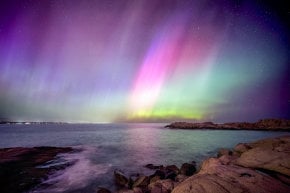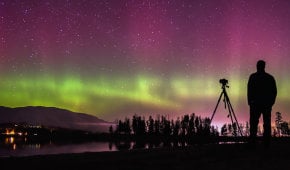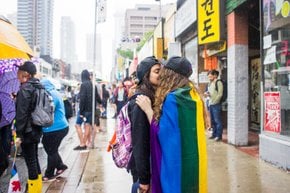Northern Lights in Toronto 2025-2026
The magical phenomenon can be just a short drive away from Toronto
Best time: September–March
Toronto is located in the southern part of Ontario, which puts it beyond the Aurora Oval, where the stunning natural phenomenon can be seen the best. However, you will still have a good chance to catch a glimpse of dancing lights in just a few hours from the city.
Northern Lights Phenomenon
The phenomenon of Northern Lights is caused by geomagnetical activity or disturbances, which are measured in Kp-Index on a scale from 0 to 9. The Kp-Index has to be at least 4 for a successful aurora hunt in the Toronto area. You have almost no chance to see it in the big city because of light pollution. You have to get away from Toronto and try your luck on the shores of Lake Ontario. Or drive a bit further to visit one of the designated dark sky areas nearby.
Best Time to See the Northern Lights in Toronto
To maximize your chances of seeing the Northern Lights in Toronto, visit between September and March when nights are longer and darker. The equinoxes provide the strongest geomagnetic activity. Clear skies are crucial for viewing the Aurora, so check provincial park websites for aurora forecasts and weather updates.
Best Places to See the Northern Lights Near Toronto
Torrance Barrens Night Sky Reserve
Torrance Barrens Night Sky Reserve is the closest stargazing and aurora-watching spot to Toronto, and it's also famous for its strong geomagnetic activity. The reserve occupies 1,990 hectares (5,000 acres) comprising of bedrock and wetlands. Trees and bushes are stunted in height, which makes the area perfect for sky observation.
The main dark sky viewing area is located on the smooth granite outcrop behind the Ministry sign on Southwood Road. It is accessible by vehicle for easy unloading of telescopes and astrophotography gear. For a stunning 360-degree panoramic view, follow the main trail, cross the boardwalk, and ascend the first ridge. Additionally, visit Muskoka Lakes for breathtaking reflections in your aurora photos.
Camping and fire-making are prohibited throughout the Torrance Barrens except at the six designated campsites. These campsites are available on a first-come, first-served basis and are free of charge.
Manitoulin Island
Manitoulin Island is washed by the magical Lake Huron, which serves as a perfect mirror for the glowing natural phenomenon. Visit Manitoulin Eco Park, which is located in the northern part of Manitoulin Island. It is a great spot to observe Northern Lights because of its pollution-free air and dark skies.
In 2024, the skies at Manitoulin Eco Park will be vibrant with activity as the Northern Lights/Aurora Borealis build toward the anticipated Solar Maximum in 2024-2025. The park hosts a variety of fun and educational events in the designated Dark Sky preserve throughout spring, summer, and fall. Events include popular Perseid Meteor Shower presentations, Night Hikes, regular weekend astronomy talks with guest experts, and custom small group events tailored to specific interests. Whether you're camping at Manitoulin Eco Park or just visiting, all events are open to the public, offering an exceptional Dark Sky experience.
Lake Superior
You'll have to drive for about 8-9 hours to get to Lake Superior from Toronto. However, it's worth it. Lake Superior is known to be one of the best spots for aurora borealis hunt in North America. Thousands of aurora chasers flock to the lake to make their Instagram-perfect pictures of the dancing lights. You can drive along the Lake Superior shore on Highway 17 between Thunder Bay and Sault Ste. Marie for some stunning displays. Also, Lake Superior Provincial Park and Pukaskawa National Park provide many scenic lookouts where you can put your camera or telescope for a perfect aurora shot.
Lake Superior Provincial Park features two main campgrounds: Agawa Bay Campground and Rabbit Blanket Lake Campground, both open from May to September. In addition to aurora borealis viewing, activities include hiking, boating, fishing, swimming, canoeing/kayaking, wildlife viewing, backcountry camping, and winter activities.
To find out about other places to view Northern Lights in Ontario click here.





















































